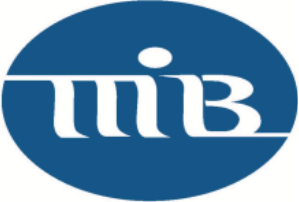“As you get older, three things happen: the memory goes, and I forget the other two.” — Erma Bombeck
Being one who can empathize with the late, great humorist Ms. Bombeck, I thought it might be interesting to discuss a segment of the fixed-income universe that has served community banking well over the decades. It’s been many months since I’ve covered it for two practical reasons. The first is that it doesn’t present relative value in the current cycle, and the second is that, because of the first, portfolio managers haven’t been buying many of them recently.
I’m speaking of the municipal bond market. It is a maxim of community banking that the more munis a bank owns, the higher performing the portfolio will be. This has been true for decades and in whatever part of the rate cycle we’re currently residing. But since we haven’t visited muni-land for a while, now is a perfect time for a sector update, complete with reminders about nuances and opportunities with state and local government bonds.
Value Measures
Tell me if you’ve heard this: The interest rate curve is inverted. It’s now been 16 months and counting since we’ve had a positively sloped curve and that includes the muni sector. A buyer has to invest in a 12-year or longer muni to get a higher yield than a one-year bond. Also, the retail sector continues to gobble up the majority of supply, which is barely running in place. A number of governmental borrowers in 2023 have delayed issuance, probably hoping for some relief on rates.
Mom-and-pop investors will typically have higher marginal tax brackets than corporations, and that translates into higher tax-equivalent yields — hence the retail demand. The current impact is such that on the short end of the curve (i.e., 10 years and in), munis produce lower tax-equivalent yields than comparable maturity treasuries. In bond-speak, this is known as “trading through the curve.” Although this is an anomaly, it has persisted for most of 2023. Hence, the relative value, or lack thereof.
Still the Favorite
Notwithstanding the preceding paragraph, a hallmark of a high-performing bond portfolio remains a high allocation of munis, although that’s changing some. According to Stifel, top-quartile portfolios had 31% of their dollars in munis in June 2023, compared to 42% a year earlier. Interestingly, the top quartile also had a dramatic drop in its effective duration year-over-year from 5.3 years to 4.2. The shape of the curve again has played a role, as the dollars reallocated out of the munis space went into short-duration taxables such as treasuries, agencies and Small Business Administration (SBA) floaters.
Still, in spite of the conundrums facing portfolio managers in 2023, the muni market remains fundamentally attractive. The curve will one day regain its positive slope. It’s expected that muni supply will again begin to increase as COVID stimulus money is spent and populations grow. And credit quality remains solid; there have been far more credit rating upgrades than downgrades, and even perennial whipping boys New Jersey and Illinois have been awarded upticks by the ratings agencies.
Buy Cheap, Sell Dear
I wouldn’t be doing my job if I didn’t offer some suggestions. If you agree that the municipal bond market is indeed expensive, then perhaps you may consider a sale of some of your holdings. The three- to five-year sector may actually produce lower take-out yields than shorter maturities. It’s also becoming more evident that the banking industry is having a solid earnings year in spite of margin compression, so a loss-earnback extension swap may have some interest.
Recall, too, that the TEFRA penalty (remember that little acronym?) will start to take a bigger bite out of your tax-equivalent yields as your cost of funds continues to rise. This is especially true for your General Market bonds, which have a much higher TEFRA hit than Bank Qualified munis. It’s déjà vu all over again and could be more reasons to at least temporarily allocate out of some tax-free bonds. On the other hand, 6%+ tax-equivalent yields are available now for those S Corps willing to invest for 20 years or so.
Ultimately, the message of this column is that “munis matter.” If you’ve put that sector on autopilot because of perceived lack of value in the new issue market, take a look at your portfolio and ask your brokers for some bids on shorter maturities. You may find an inexpensive source of liquidity.
Now that we’re refreshed on some of the finer points of municipal bonds, I’m thinking of Mark Twain’s observation: “A clear conscience is a sure sign of a bad memory.”
Jim Reber (jreber@icbasecurities.com) is President and CEO of ICBA Securities, ICBA’s institutional, fixed-income broker-dealer for community banks.









